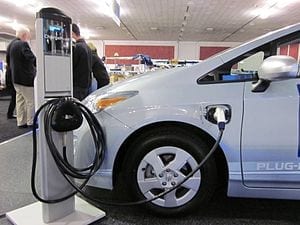
When Patrick Langevoort’s company issued him an electric vehicle two years ago, the first months were filled with misadventure: he found himself far from Amsterdam, with only a 25 percent charge remaining, unable to find the charging point listed on a map.
Though the car was supposed to travel 100 miles on a full battery, he discovered that cold weather and fast driving decreased that range.
But electric vehicles have improved, the network of charging stations in the Netherlands has expanded and drivers like Mr. Langevoort are getting used to the particularities of electric driving. “I used to be a real petrol head,” said Mr. Langevoort, who works for a company that manages electricity networks. “Now, I’ve sold my petrol car.”
Although a number of European countries and a few American states are aggressively promoting the use of electric vehicles to reduce planet-warming emissions and pollution, the Netherlands provides perhaps the ultimate feasibility test. If electric vehicles catch on anywhere, it should be here: a small country — about 100 miles east to west — with gas prices of about $8.50 a gallon and a long tradition of environmental activism.
To encourage electric driving, the country is developing a rapidly expanding national grid of charging stations in cities and along highways; and Amsterdam offers owners of electric vehicles free street parking and charging. With hefty tax breaks, promotional leases and cheaper operating costs, the vehicles offer driving costs no more than those of conventional cars, some analysts say.
The number of plug-in electric vehicles in the Netherlands soared eightfold to about 7,500 last year, and charging posts dot the sidewalks. “In a few countries you’re starting to see a number of E.V.’s on the road, especially in capital cities; they’re very visible,” said Peder Jensen, a transportation expert at the European Environment Agency.
And yet, experiments with the cars in the Netherlands and Denmark also underscore the challenges facing this new technology. Sales have been lower than politicians and automakers hoped, representing under 1 percent of new vehicles, even here. “It seems that the industry has not convinced consumers that they can do this,” Mr. Jensen said. “If they fail over the next few years, I think investors will pull out, and that will be a problem.”
via The New York Times – ELISABETH ROSENTHAL







